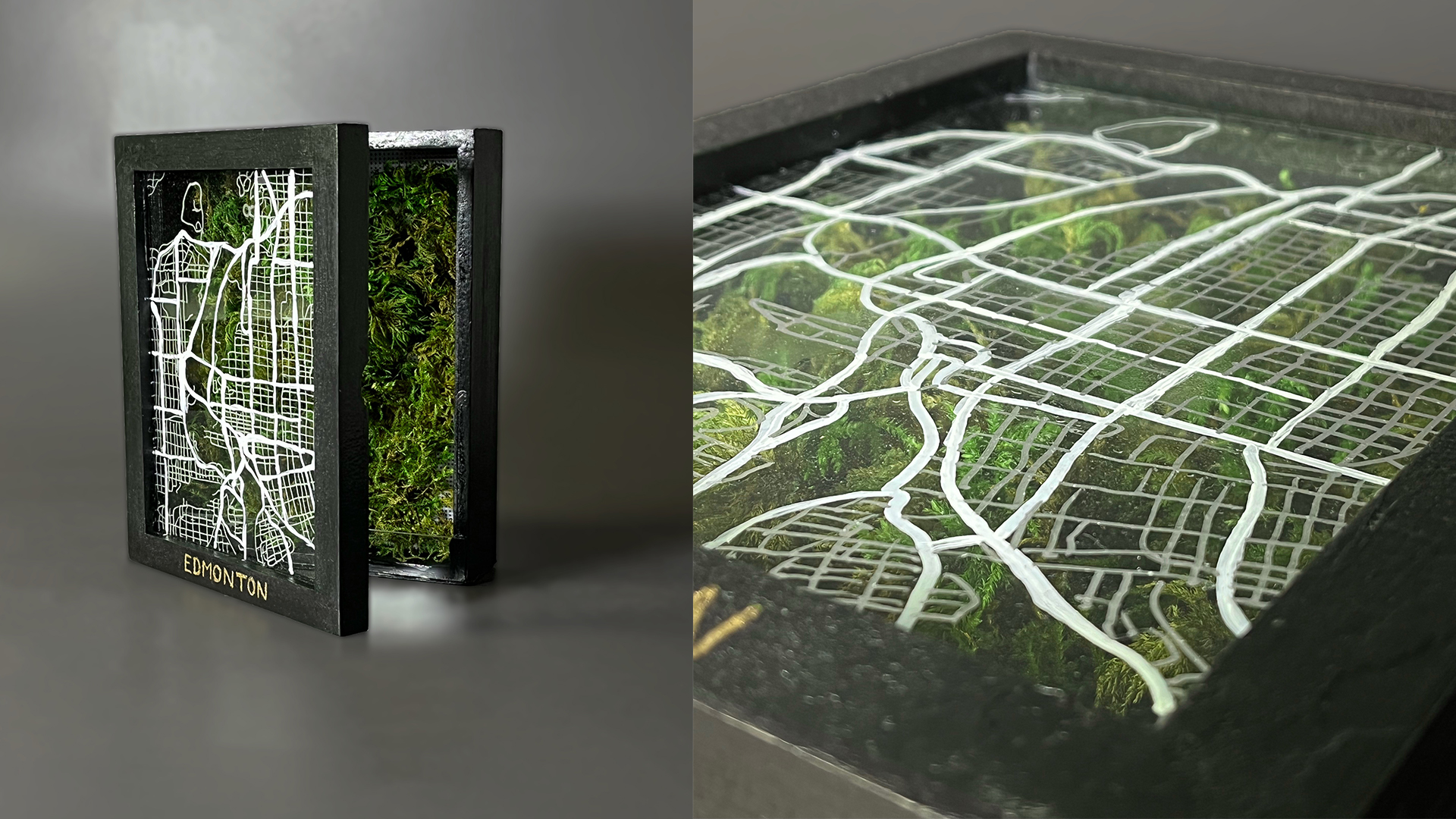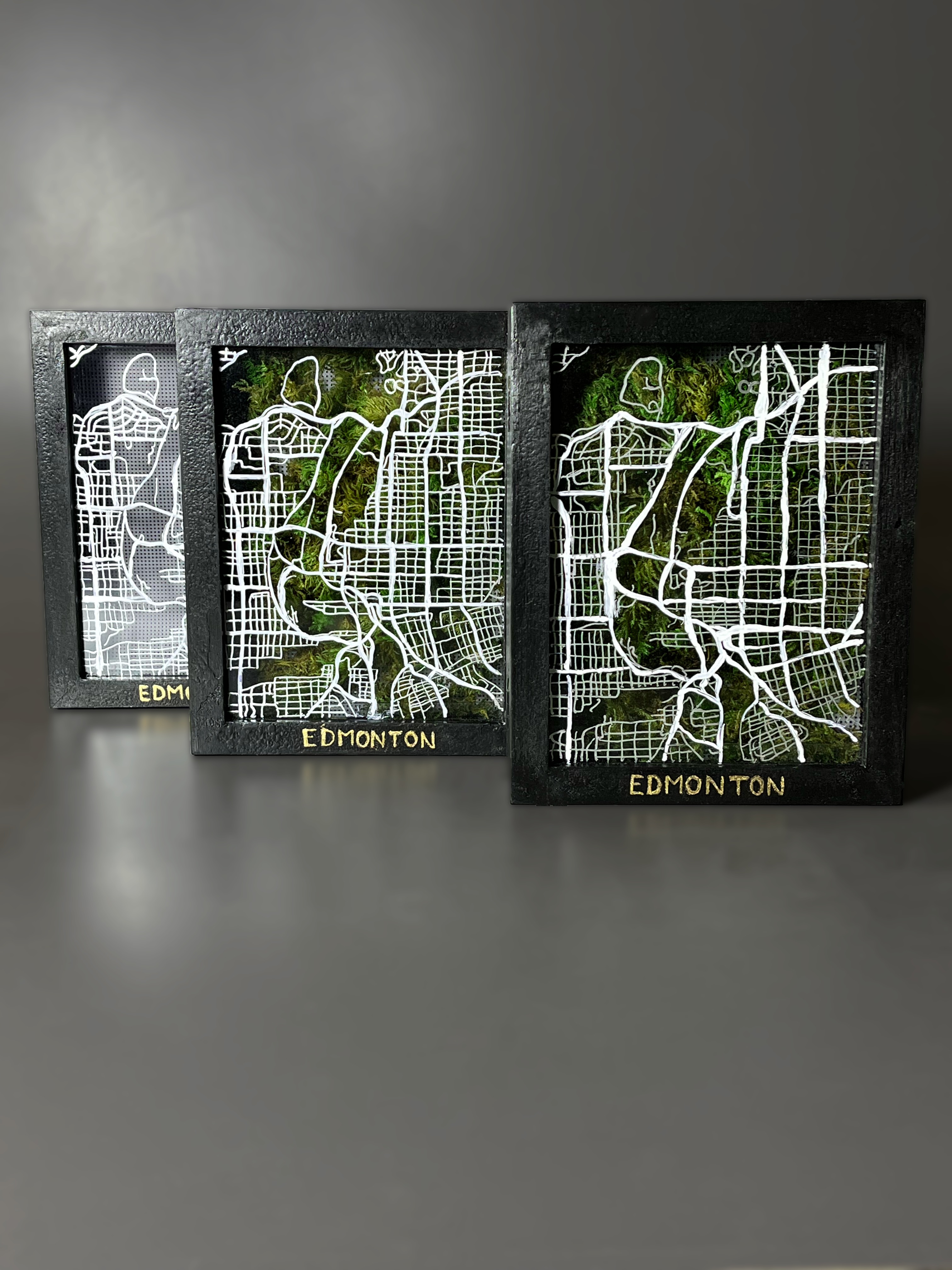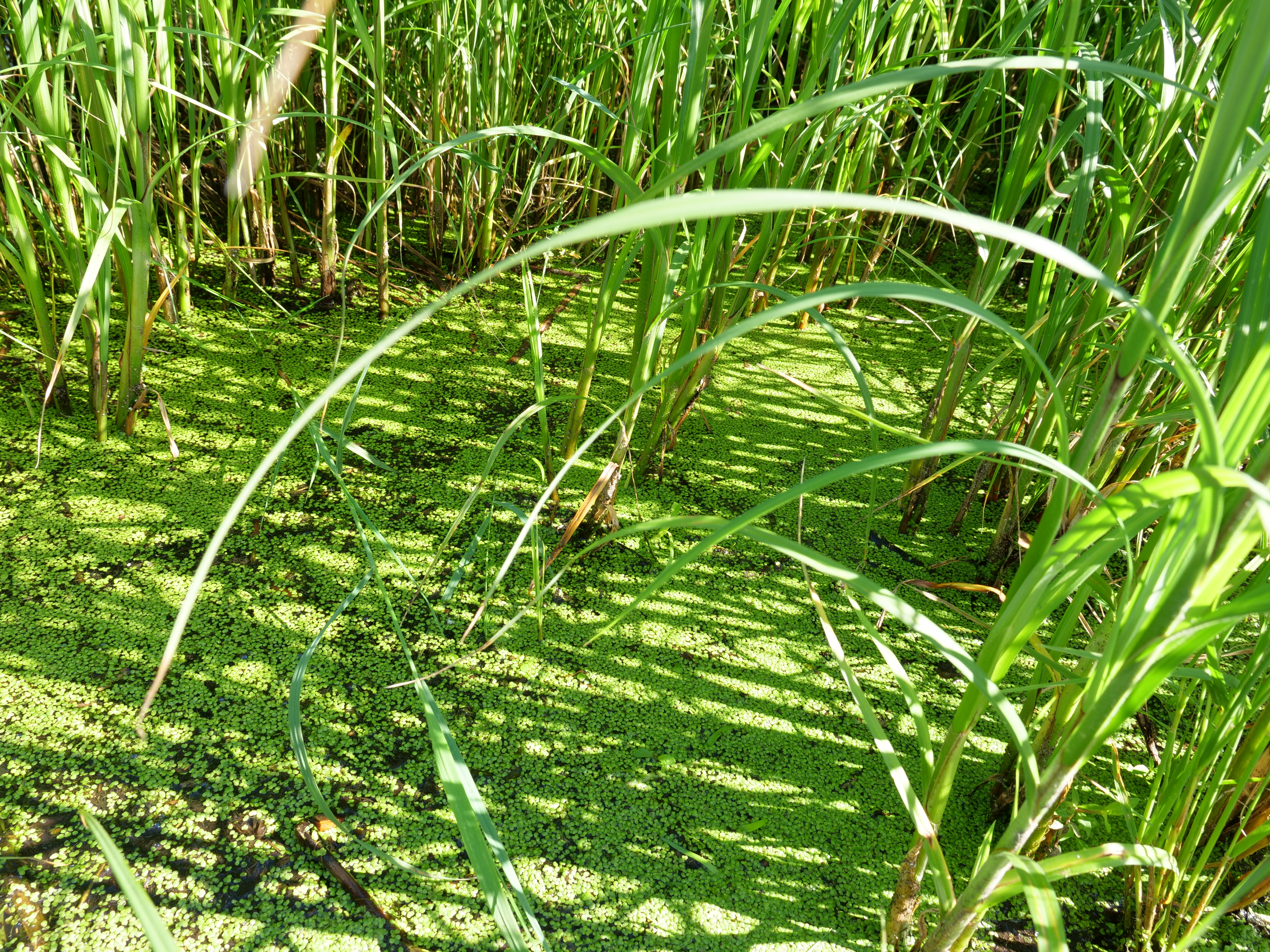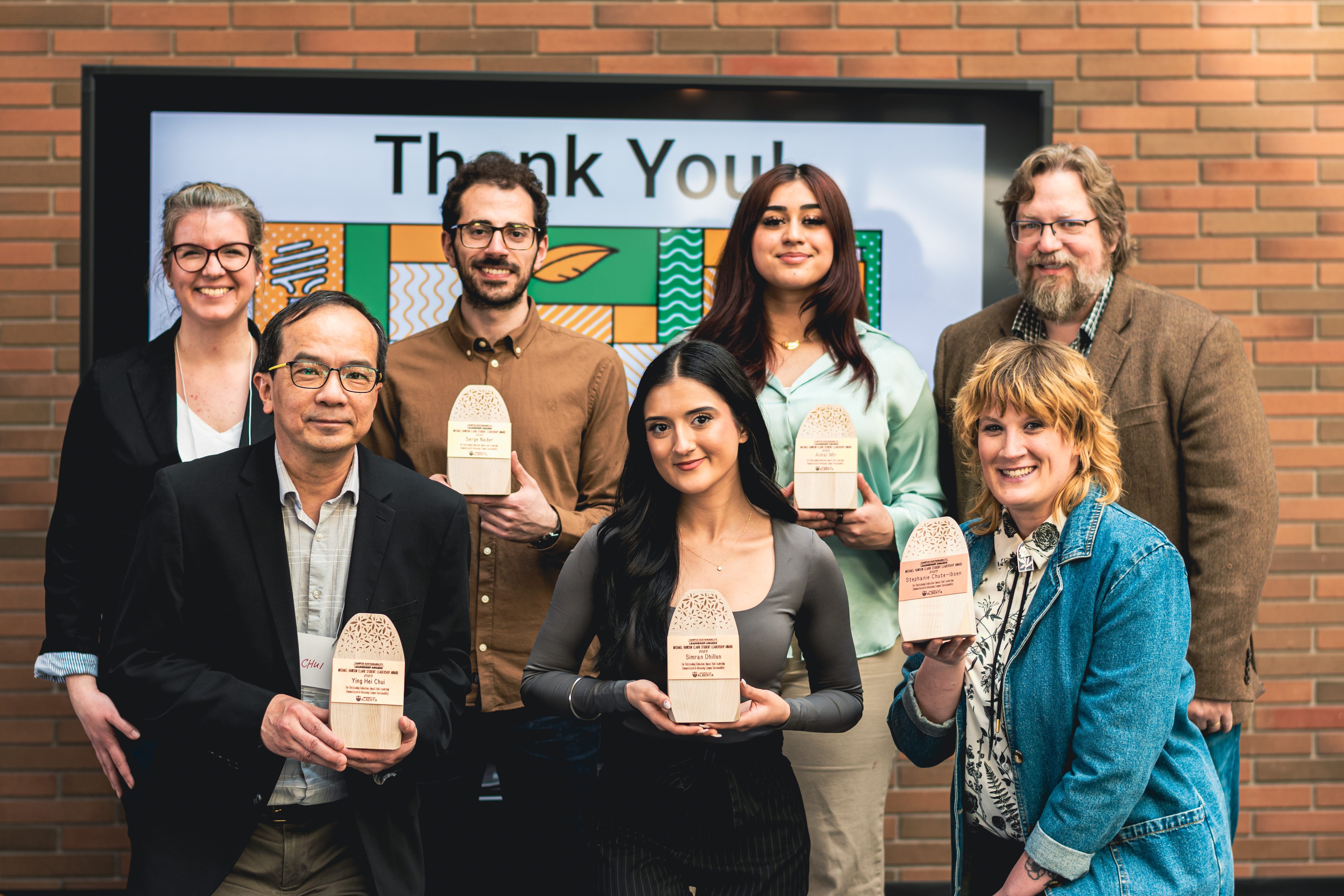River Valley in a Box
The North Saskatchewan River Valley ties Edmonton in a “ribbon of green” for six months of the year, but vanishes into the same shades of white, grey and brown that engulf the rest of the city when winter arrives.
For Edmontonians who need summer’s green hues in their lives year-round, Bachelor of Design graduate Rylee Maleski has a remedy. He has captured the river valley in a box.
Completed for his Certificate in Sustainability integrative project, Maleski’s miniature wall garden is an eight by 11 inch box filled with mosses that are meant to replicate those that grow in the river valley. It can be mounted on a wall, and it is covered by a glass panel overlaid with a painting of Edmonton’s map.

Certificate in Sustainability grad Rylee Maleski’s “river valley in a box.” Photos by Rylee Maleski
“This project relates to seasonal depression and a lack of greenness and exposure to the outdoors we experience during winter,” Maleski said. “I had a lot of friends who talked about their experiences with seasonal depression to help me put it together. Caring for the garden also gives you a schedule and in turn helps you take care of yourself.”
The miniature wall garden can also provide a piece of the river valley for those who may, due to mobility issues, struggle with the park’s steep terrain, Maleski said.
He made three prototypes for the project, each of them built from sustainable materials such as re-used picture frames and scrap wood left behind from industrial design projects. He said that he will continue to tweak the design and hopes that he will soon have a product he can sell.

Three river valley wall garden prototypes. Photo by Rylee Maleski.
“It was challenging to combine my field with sustainable thinking,” he said. “Industrial design in general is not always the most sustainable thing. There’s a lot of scrap, a lot of waste involved with production. This project let me put some of that material to use.”
Working with living materials also took him outside of his comfort zone.
“Moss is not something you just patch on with wood glue or superglue—it’s a living thing that you have to be careful with. I sewed it into the mesh on the back of the frame and that process could be finicky,” he said.
Because Maleski completed the project during winter, he struggled to find Edmonton-grown moss and had to import from Europe, but future wall gardens will use locally-sourced material, he said.
Caring for the wall garden is simple: spray it with water once a week and keep it somewhere that receives sunlight.
Maleski re-planted the moss from his garden because it started to die when he went on vacation, but the moss garden that he gifted his parents is thriving, he said.
“This project was all about combining that passion of creating things and making something new and beautiful, and also combining nature with the industrial side of design,” he said. “I’m satisfied that it did what I set out for it to do.”


